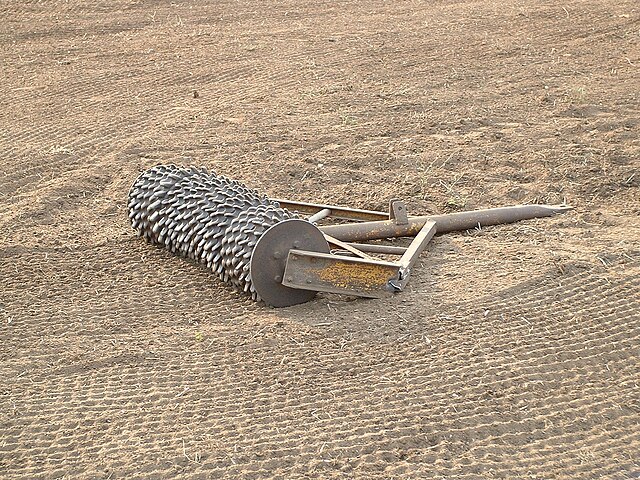In agriculture, a harrow is a farm implement used for surface tillage. It is used after ploughing for breaking up and smoothing out the surface of the soil. The purpose of harrowing is to break up clods and to provide a soil structure, called tilth, that is suitable for planting seeds. Coarser harrowing may also be used to remove weeds and to cover seed after sowing.
A spring-tooth drag harrow
Crumbler roller, commonly used to compact soil after it has been loosened by a harrow
Clydesdale horses pulling spike harrows, Murrurundi, New South Wales, Australia
The mould-board plow leaves distinct furrows (trenches) across the field.
Tillage is the agricultural preparation of soil by mechanical agitation of various types, such as digging, stirring, and overturning. Examples of human-powered tilling methods using hand tools include shoveling, picking, mattock work, hoeing, and raking. Examples of draft-animal-powered or mechanized work include ploughing, rototilling, rolling with cultipackers or other rollers, harrowing, and cultivating with cultivator shanks (teeth).
Tillage after corn harvest (Click for video)
Rice tillage. Valencian Museum of Ethnology.
A Kenyan farmer holding tilled soil
Tilling with Hungarian Grey cattle








